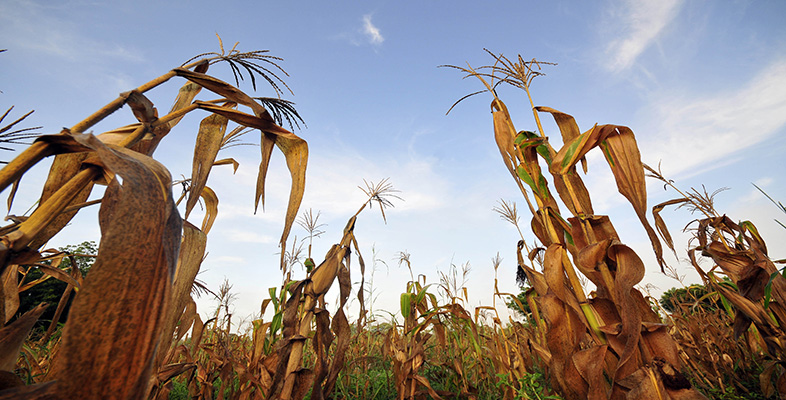2.4 Changing environmental attitudes
So, from the start of the Industrial Revolution, people have been aware that the development of an industrial economy brings problems as well as benefits. But the benefits, in terms of productive capability, mobility, convenience, cheap consumer goods, and profits, were usually felt to outweigh the disadvantages, particularly by those in positions of power. Many of the accompanying negative factors, such as poverty and unemployment, or the creation of more destructive machines of war, if they were regarded as problems, were laid at the door of society rather than technology. The adverse effects on the environment were usually seen to be localised and short-lived, and accepted as an inevitable cost of progress, to be dealt with only when there was a clear and immediate threat to life and livelihoods. People had more pressing priorities than concern about the environment, particularly at a time when its ability to supply goods and services, and its capacity for absorbing wastes and pollution seemed limitless.
It is probably true to say that the predominant view in industrialised countries, persisting well into the twentieth century, was that the transformations being wrought by science and technology were being used wholly in the service of progress (after all a combination of medical advances and good plumbing was steadily conquering many of the most dreaded infectious diseases). Nature, while occasionally needing our protection in badly polluted localities, was felt to be robust and bountiful enough to be managed, tamed and exploited as we wished. This belief probably reached its peak in the 1950s and early 1960s, and appeared to be amply confirmed by the development of nuclear power, which promised to provide 'virtually free' electricity for all: the ultimate technological triumph.
This view was very shortly to be challenged. Several events conspired in the 1960s and 1970s to lead some to realise that our environment was not infinitely large or rich, that there were limits to the resources we could take from it and the rate at which the environment could absorb the waste generated by economic and industrial growth. Rachel Carson in her book, Silent Spring, published in 1962 (Carson, 1962), was one of the first to bring into the public domain concerns about the widespread use in the USA of DDT, other organochlorine compounds and organophosphates as pesticides. She outlined their toxicity and persistence and documented their accumulation in food chains and damaging effect on wildlife, particularly birds and fish. She also discussed several issues that remain topical: the possible effects of these chemicals on people, and the development of resistance to them by the target insects, including malarial mosquitoes. In addition, she gave a full account of biological control as a practical alternative to the chemical approach. Her views were not immediately embraced by the establishment. Indeed many vigorously contested them, including scientists and workers in industry and agriculture, but the debate had been opened up and has continued ever since.
It is perhaps not surprising that new risks accompanied the rapid expansion in the variety of new materials and chemicals used in industry and agriculture to serve the burgeoning consumer society. Globally, the chemicals industry is the largest source of toxic emissions, with approximately 40 per cent* of emissions, and has also been responsible for fatalities in some major pollution events, though fortunately these are not frequent occurrences. Tim Jackson describes the proliferation of new chemicals, as this short excerpt illustrates:
“The chemicals industry in the United States, for example, has expanded more than tenfold in the last forty years. Approaching 100,000 industrial chemicals are now in commercial use world-wide, and this figure is increasing at the rate of between 500 and 1,000 new chemicals each year. This increase has been driven in part by the availability of petroleum-derived by-products of an expanding oil industry, and in part by the increased role for new and complex chemicals in new and expanding technological contexts: agriculture, metal purification and metal plating, electronics [and computing], textiles and the food industry.”
(Jackson, 1996, p. 29)
Today, in many countries, chemicals that are known to be toxic, or hazardous in other ways, are strictly controlled and in some cases banned for industrial purposes. The key word here is 'known'. Knowledge or proof of harm from a particular substance is not always easy to come by, even though the potential hazards can often be anticipated from its intended use and action, and from its chemical formula.
At the start of the Introduction I speculated whether my use of a refrigerator might be damaging the environment. I will now follow up this point through three Case Studies which explore different aspects of the use and environmental impacts of refrigerators and refrigeration. The first explores the relationship between refrigerators and an unusual set of chemicals, which were given the proprietary name of freons. Freons appeared to be totally safe and inert, and had some useful physical properties that proved to be invaluable to the refrigeration industry. After more than forty years of apparently trouble-free use, the discovery that they posed a major threat to human and environmental health was thus all the more shocking. Today they are better known by the abbreviation, CFCs, or by their full name, chlorofluorocarbons.
